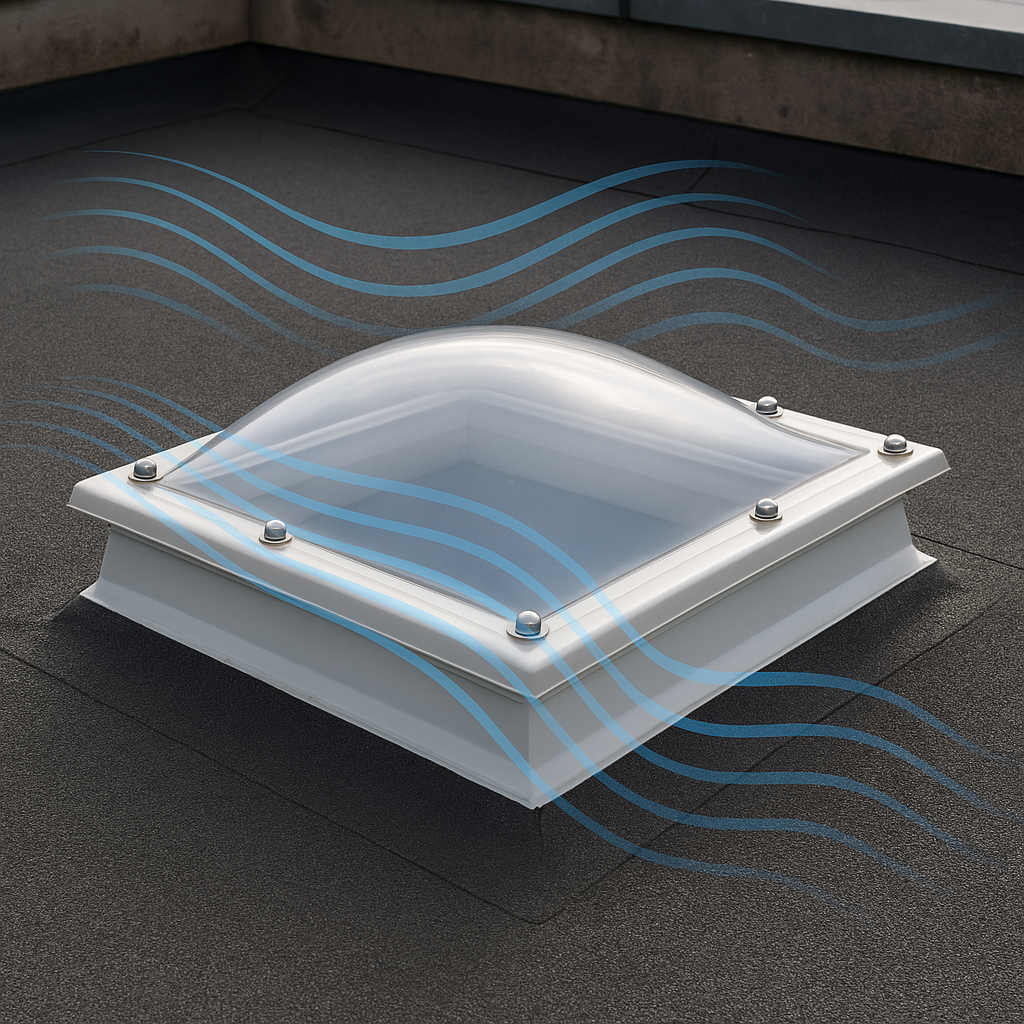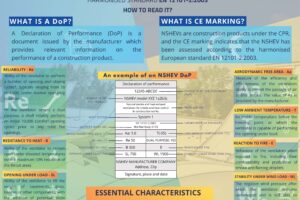Rooflights play a vital role in ensuring a building’s energy efficiency and indoor comfort by providing both daylight and natural ventilation.
One key factor affecting a rooflight’s performance is air permeability, which refers to how much air can leak through the rooflight assembly.
What Is Air Permeability in Rooflights and Roof Hatches?
Air permeability is a measure of the rate at which air leaks through a rooflight or roof hatch when subjected to a specified internal pressure. It is typically expressed in cubic meters per hour per meter of rooflight perimeter (m³/(h·m)). This characteristic is critical for:
- Energy Efficiency: Minimising air leakage helps maintain consistent indoor temperatures, reducing energy losses.
- Moisture and Condensation Control: Reduced air movement lowers the risk of condensation, which can damage internal finishes..
- Prevention of Air currents: Lower air permeability means less unwanted air leakage, reducing air currents drafts.
Why Is Air Permeability Important?
Ensuring low air permeability in rooflights is essential for both thermal comfort and energy efficiency. Well sealed rooflights lead to:
- Reduced Energy Consumption: Minimising air leakage supports heating and cooling systems, lowering energy bills.
- Condensation Issues: Controlled airflow reduces the moisture build-up, reducing condensation and potential structural damage.
- Increased Comfort: Uncontrolled air currents make indoor spaces less comfortable. Reducing them is especially important in buildings where insulation is already a challenge..
EU Regulation: Setting the European classes for Rooflights and Roof Hatches
The Commission Delegated Regulation (EU) 2019/1342 establishes air permeability classes for rooflights made of plastic and glass, as well as for roof hatches.
The Delegated Regulation defines three classes of performance based on how much air passes through a rooflight under specified test conditions. The key parameters include:
- Test Pressures: The tests are conducted at two defined internal pressures—4 Pa (lower limit) and 100 Pa (higher limit).
- Air Permeability Limits:
- Class A: Rooflights must have an air permeability of less than 1.4 m³/(h·m) at 4 Pa and less than 12 m³/(h·m) at 100 Pa.
- Class B: Rooflights with performance equal to or above 1.4 m³/(h·m) at 4 Pa and 12 m³/(h·m) at 100 Pa.
Looking to the Future
Rooflights and roof hatches not only introduce daylight into building design but also provide natural ventilation, which is crucial for moisture and condensation control and improving occupants’ thermal comfort.
In addition to meeting the requirements of the harmonised European standards EN 1873 and EN 14963, both manufacturers and building designers must ensure that installed products comply with national air permeability requirements for the specific building type (based on the European classes outlined above)
Reference documents freely accessible in our blog




